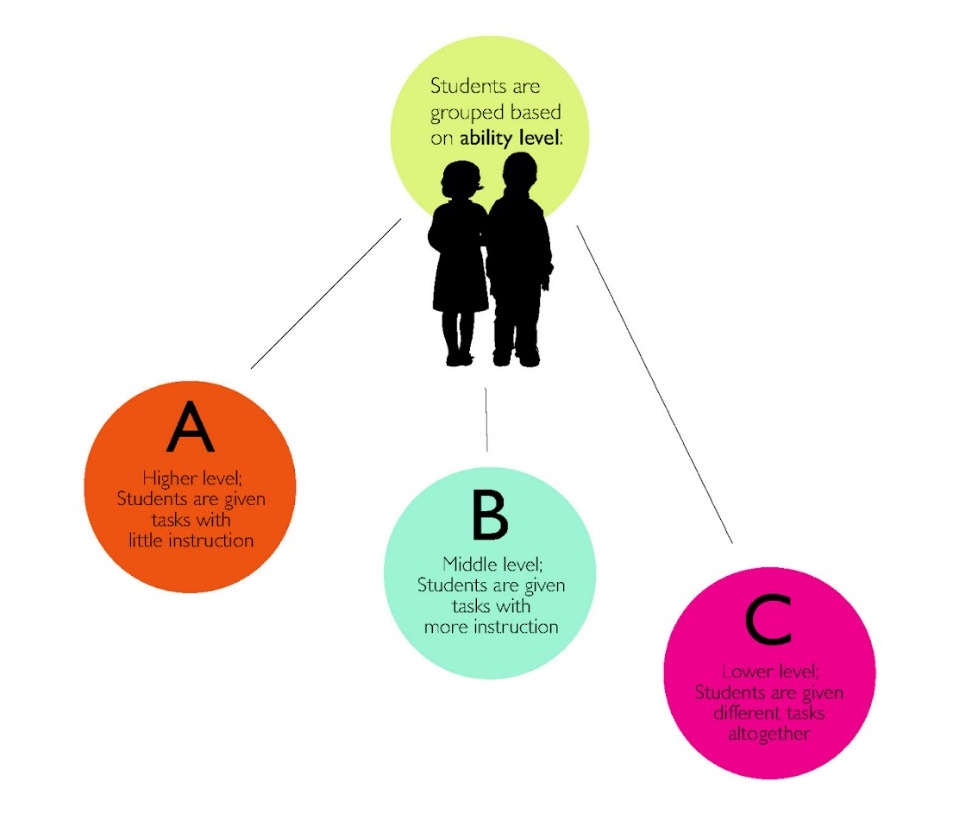
Is Ability Grouping Right for Your Child? Unveiling the Advantages & Disadvantages
18th March 2024
Teaching is one of the challenging professions that could take a toll on.
To make your teaching life easier, you can utilize the “Ability Grouping” approach which involves dividing students who may have similar kind of abilities, learning needs, and academic performances and providing specially crafted instructions according to the different learning needs of each group.
However, the “Ability Grouping” approach has both advantages and disadvantages on the educational experience of every student’s academic performance.
In this blog post, we will be exploring the concept of the Ability grouping approach, its advantages and disadvantages in detail.
Before moving to the topic, can we ask you a question? Do you follow us on Social Media? We regularly share upgraded educational content, tips, feedback, and more. Check us out by clicking the profiles here - Facebook / Twitter / LinkedIn / Pinterest / Instagram / YouTube
So, without any further delay, let’s get started.
What is Ability Grouping Approach?

Ability grouping also known as “tracking” or “streaming” is a method of forming groups of students with similar academic and skill abilities. The purpose of this approach is to make the teaching job and also the student’s life easier by crafting lesson plans according to groups with different levels of academic, knowledge, and skill. This ultimately helps teachers to create a personalized learning experience for each student.
How You Can Assign Students To Different Ability Groups?
You can consider below mentioned factors to assign students to different ability groups:
- Academic Test Scores
- Past Academic Performance
- According to your observation and evaluation.
Types of Instructional Approaches in Ability Grouping Classroom Settings
Once you’ve already assigned students to different ability groups. Let’s get to know different instructional approaches that you can use in ability grouping classroom settings:
- Pacing
This instructional approach helps different groups progress through the curriculum at their own pace. Some groups of students might be able to grasp the lesson more quickly and on the other hand, certain groups of students might struggle, consider giving them additional support and guidance.
- Differentiated Instruction
Using this instructional approach, every teacher can adapt their teaching method and resources according to the different learning needs and abilities of each group.
- Peer Interaction
Students in similar ability groups can help each other to make understand different concepts which also creates a collaborative learning environment.
Advantages of Ability Grouping Approach
Ability grouping concept can have various benefits for both teachers and students. Let’s get to know some of the advantages of the Ability Grouping approach-
- Personalized Learning Experience
While students are in smaller groups, for teachers it becomes easier to give each student equal attention compared to larger classroom settings. This creates a personalized learning experience for every individual student and fosters a culture of academic growth.
- Increasing Rate of Participation
When students are with their peers in a smaller group with a similar skill level, they feel more comfortable in learning activities, participating in group discussions, and feel more enthusiastic about working with their peers. This creates an inclusive and supportive learning environment where students can actively participate in the learning process.
- Target Instruction
Ability grouping teaching approach allows teachers to craft instruction according to the needs of different smaller groups of students. Instead of meeting the diverse needs of students in the large classroom setting, teacher can deliver their instruction to smaller groups of students which also helps them to pay full attention to every student.
Disadvantages of Ability Grouping Approach
While the Ability Grouping approach has many benefits. However, it has its drawbacks and limitations as well. Let’s get to know certain disadvantages of it.
- Comparing With Each Other
Students may compare with each other progress and it may hamper the self-esteem and confidence level of low-ability groups.
- Inequality in Educational Level
If students of low-level skills are being grouped, they will not likely get the opportunity to learn from their high-skilled peers which creates an environment of inequalities.
- Lack of Flexibility
If a student is placed in a low-level skill group and they improve their academic skill over time they get stagnant and not being able to join or shift to a higher-level group. This can hinder the academic and learning progress of students.
Ability Grouping Approach Benefits Depends on Utilization
The ability grouping approach has its own merits and drawbacks. On one end, teachers have the opportunity to form groups of students according to their present academic abilities, and on the other hand, this approach is also being questioned for inequality and negative effects on students. However, you can avoid it by understanding the needs and characteristics carefully before forming any group which will help you to maximize the benefits and mitigate the drawbacks to a certain level.
Additionally, if you want to know about the ability grouping approach in detail then considering pursue courses like Bachelor of Education in Early Childhood Education, where you will get guidance from top expert trainers and they also help you to become an effective teacher in the education industry.
We believe education should be accessible for everyone. That’s why we don’t charge for our blogs. Find the right course that will help you in your career with us, contact us at +6621056101. You can mail us at act@asiancollegeofteachers.com
Written By : Park Jin Ae




